Essay / ON NATURE AND OUR PLACE IN IT
The following text was written as a collateral essay to Ľuboš Kotlár’s project entitled act iii: it’s getting hot in here, which took place in the fallout shelter under the Kunsthalle Bratislava. The essay develops one of his main themes – queer thinking and the associated non-binarity.
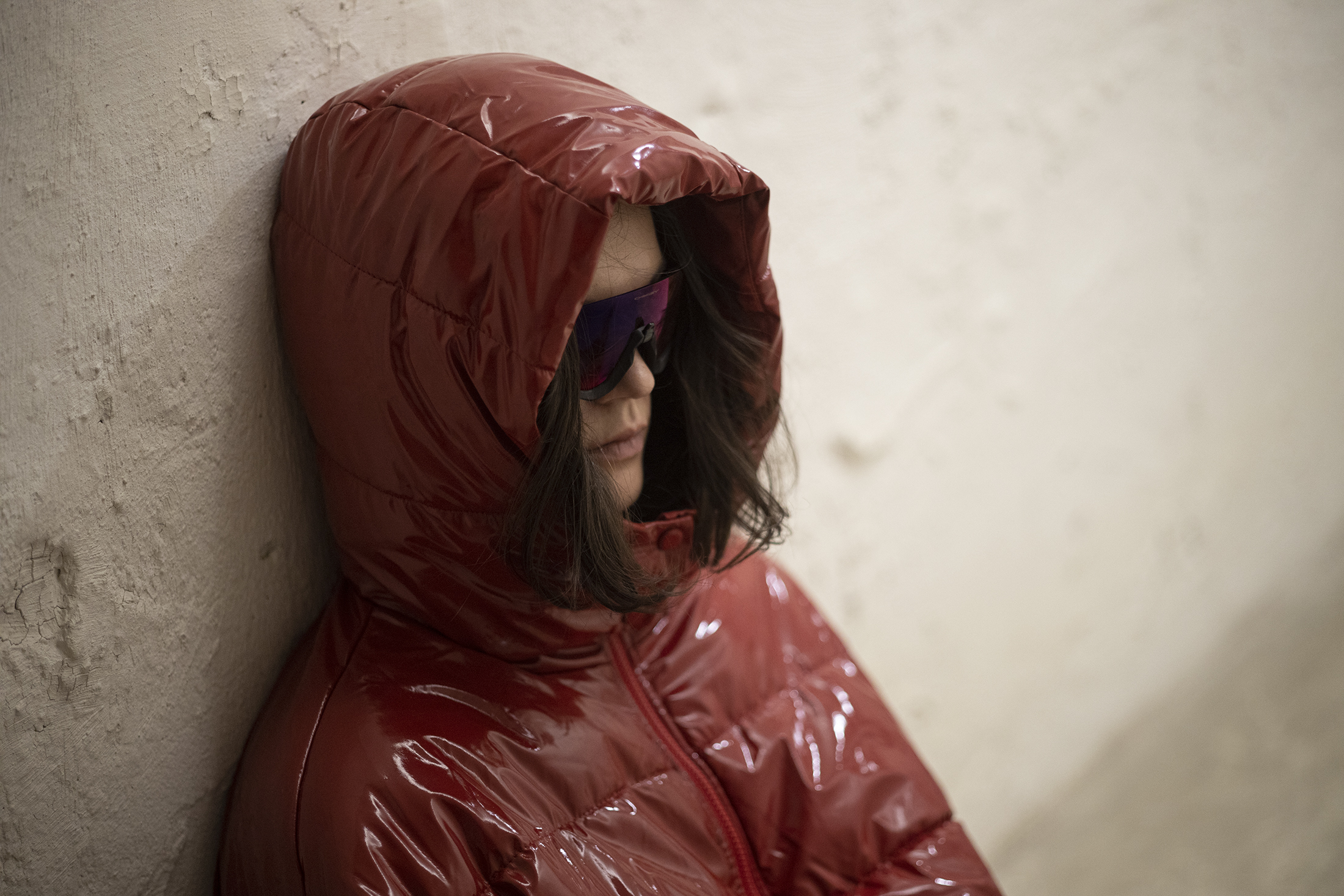
untitled (from the Nowlessness series), 2021, performance, 180 min, concept by Ľuboš Kotlár, dramaturgy by Katarína K. Eva Priečková, Gabriela Smetanová, photo: Leontína Berková.
duality in dissolution
Non-binarity in general poses a problem, or more precisely, a problem for our thinking that is inherent in modern society. Our cognitive faculties tend to sort the world and the phenomena in it into binary oppositions – natural/artificial, technological/organic, human/non-human, external/internal, us/them or male/female. Yet the attempt to think without respecting such dual divisions is not new; we find it as early as the 1980s, when it was born against the backdrop of technohumanist imaginings and the struggle for primacy in the conquest of the universe. But before we realise what it really means, it is necessary to go back in time and understand the wider context that leads us to a new way of looking at the world around us today.
nature and gallery space
One example in which the separateness of the two basic oppositions, culture and nature, can be clearly seen is the concept of the white cube, created under the influence of modernism. Specifically, in the idea of the gallery space, which is radically delineated from the external reality by the absence of windows or the overall neutrality of its interior, devoid of traces of the past, present or future. The flat white walls seem to suggest that what is between them bears no direct relation to nature, except that it visually imitates it (as it used to in the past, especially with the medium of painting). The white cube gives the appearance of being almost a sacred place dedicated to quiet aesthetic contemplation. It is a space devoid of signs of social reality and surrounding nature, characterized by timelessness and neutrality.[1]
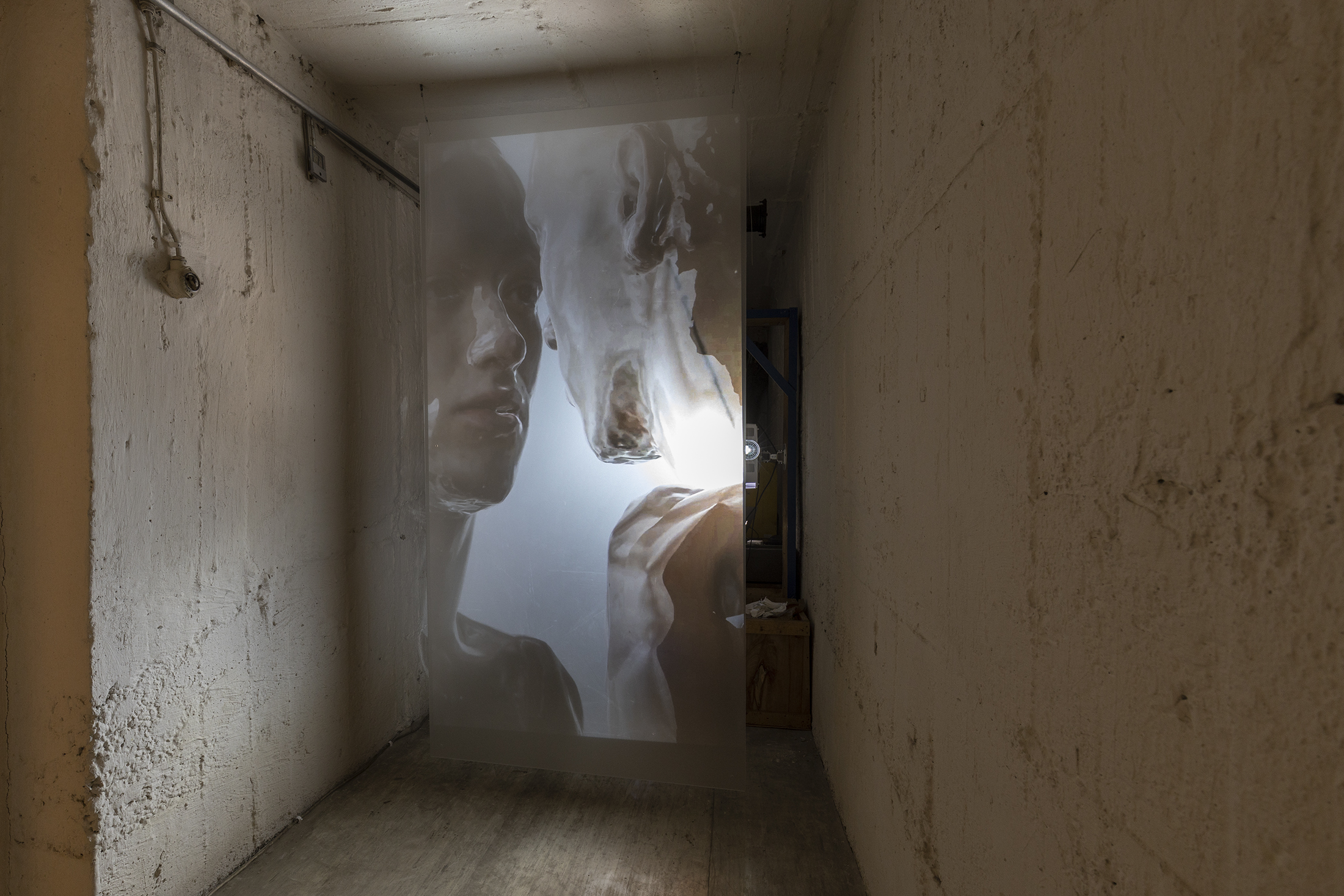
untitled (from the Nowlessness series), 2021, video, 5:23 min., concept by Ľuboš Kotlár, 3D animation by Paula Malinowska, sound by NaiKavols, editing by Vladimíra Vrbiňáková, dramaturgy by Katarína K. Katarina Cvečková, model: Maty Grznár, lyrics: Marina Abramović, Björk, Katarína K. Cvečková, Michel Houellebecq, Ľuboš Kotlár, Madonna, Lana del Rey, photo: Leontína Berková.
undermining and domination of the subject
Modernism under the influence of 19th century aesthetic views. had its own reasons for defending the autonomy of cultural activities. In doing so, it followed the classical division between nature and culture in the Western tradition. Today, however, we are in a very different world, and the environmental consequences of the industrial revolution that the first half of the 20th cent. “We can feel and see it all around us in the early years of the industrial revolution, driven by the ‘engine’ of progress and our nurtured notion of the supremacy and infallibility of human rationality. Deprived of the oversight of the gods, we as modernists have adopted the belief that nature is something passive, separate from us, and dependent on a thinking subject who is at the centre of everything and has the power to shape and reshape it. Despite the incredible advances of modern science, human, and therefore cultural, activities have had a devastating impact that is unprecedented in planetary history today. The human species, through its own expansion, has replaced other natural elements that have altered environmental conditions (meteorite, volcanoes, tectonic layers). This thinking – centred on humans as the privileged beings of this planet – has brought us to a tipping point where our original notion of absolute control over nature is crumbling, along with our ability to foresee possible future scenarios.2 Increasingly, we are confronted with phenomena that transcend us and our cognitive frameworks (developments in AI, biotechnology, viruses, etc.). This shows us the answer to the question of why anthropocentrism (human-centered thinking) is currently being “undermined” at its foundations by philosophers and philosophers.[3]
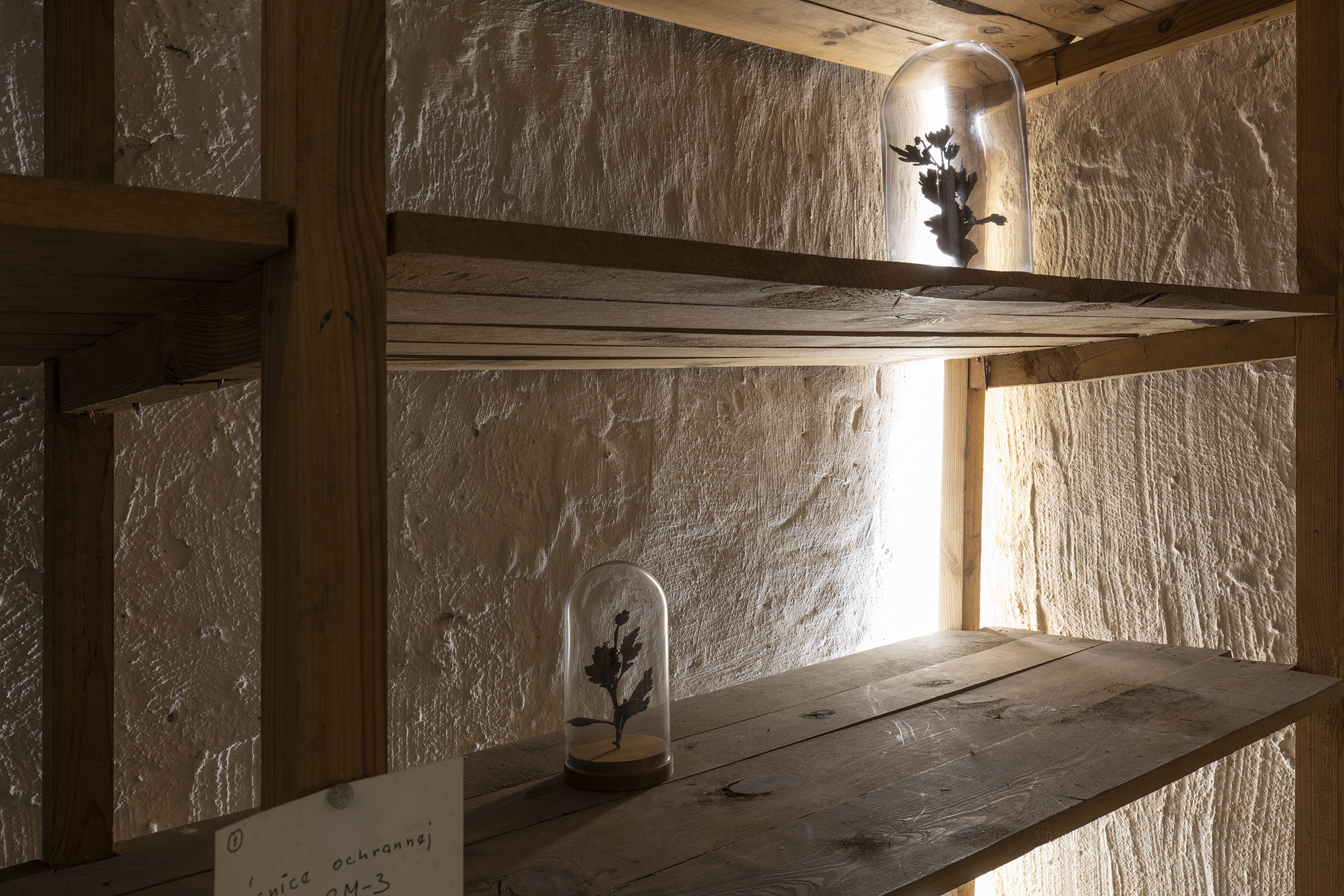
Marek Burcl: untitled, 2009, copper electroplating plants, photo: Leontína Berková.
plants speak
Dualistic thinking is simply inherent in us. It is a kind of universal principle describing the being of things, the world and us in it. However, if we want to show a knowledge of reality in which these strict and fixed binary oppositions (e.g. human and non-human, cultural and natural) are lost, we can go further back in time. In his text Beyond Nature and Culture, Philippe Descola analyses the animistic, naturalistic, analogistic and totemic tendencies of archaic societies, trying to illustrate the blurring of the nature/culture or subjective/objective categories. To take animism as an example, plants, animals, and other entities are endowed with subjectivity in this belief – they may thus share individual relations between themselves and humans, as well as social characteristics and ethical rules, and may become an equal part of rituals or mythological stories. So they are not understood as part of a passive exteriority, something outside of us. Human and extra-human beings occupy the same cultural view of their own everyday lives, since they share the same kind of subjective status, but they have a different surrounding world (object) – they inhabit it differently and use it differently depending on their own individual physical makeup. Animals or plants are thus not seen as inferior in the eyes of archaic people, but are given their own identity. Animism, he argues, creates elemental categories that enable a social practice in which the dualities of natural/cultural or human and extra-human lose meaning. It is interesting to add that compared to modern Western thought (human-centered thinking), similar animistic tendencies have had a longer history.
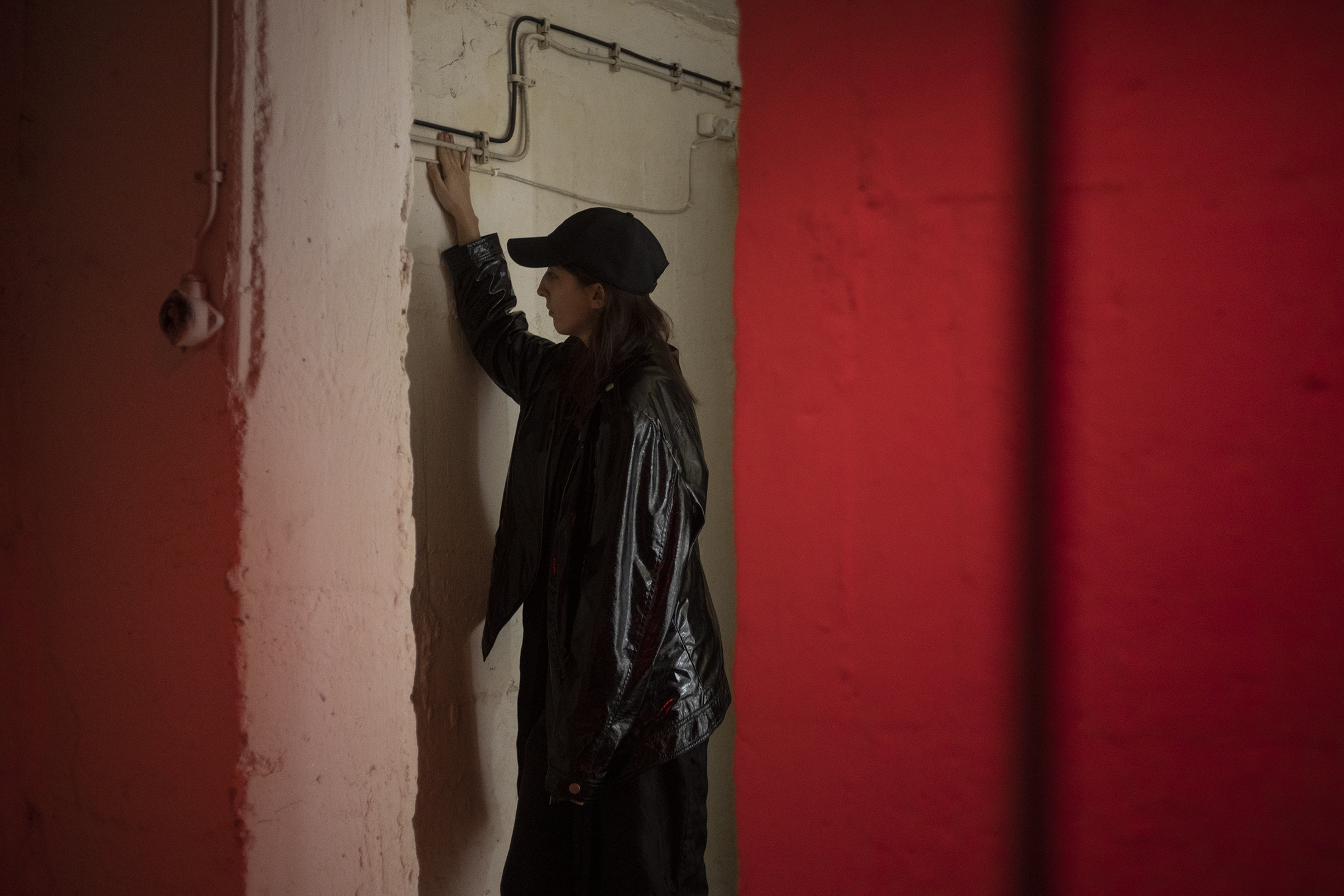
untitled (from the Nowlessness series), 2021, performance, 180 min, concept by Ľuboš Kotlár, dramaturgy by Katarína K. Eva Priečková, Gabriela Smetanová, photo: Leontína Berková.
bad trip
Thinking that divides the world into simple oppositional categories, in which the self (the subject) is the dominant element as opposed to everything non-human, breaks down even in a seemingly simple activity that we as humanity have practiced since time immemorial. The use of psychotropic substances has been part of rituals in the past. In modern society, the habit has been secularized, stripped of its transcendent meaning. Under the influence of psychotropic substances (especially in the case of the so-called bad trip), our brain is attacked by an external substance causing specific brain responses. Basically, this is a chemical reaction in which we experience a state outside of our normal perception – rationality is suppressed and the structure of the world can be rearranged (this is why psychotropic substances are part of rites of passage in particular). Such a state is often described as a kind of merging with the universe into a single whole, a consciousness of mutual cosmological coexistence. Clear boundaries of categories or words disappear, and distinguishing fantasy from reality or our bodies from their surroundings becomes impossible. This state is defined by the discarding of the ego’s domination – the self seems to dissolve into the multiplicity of things. What is interesting, however, is the relationship that develops here – the self is invaded by an external agent (the drug) that takes control of the visual interpretation of the world around it (the vision or loss of perception of time and space). The thinking subject thus ceases to be the privileged arbiter of perception – all our cognitive operations are under the influence of a particular substance in our brains and lose their original autonomy.[4]
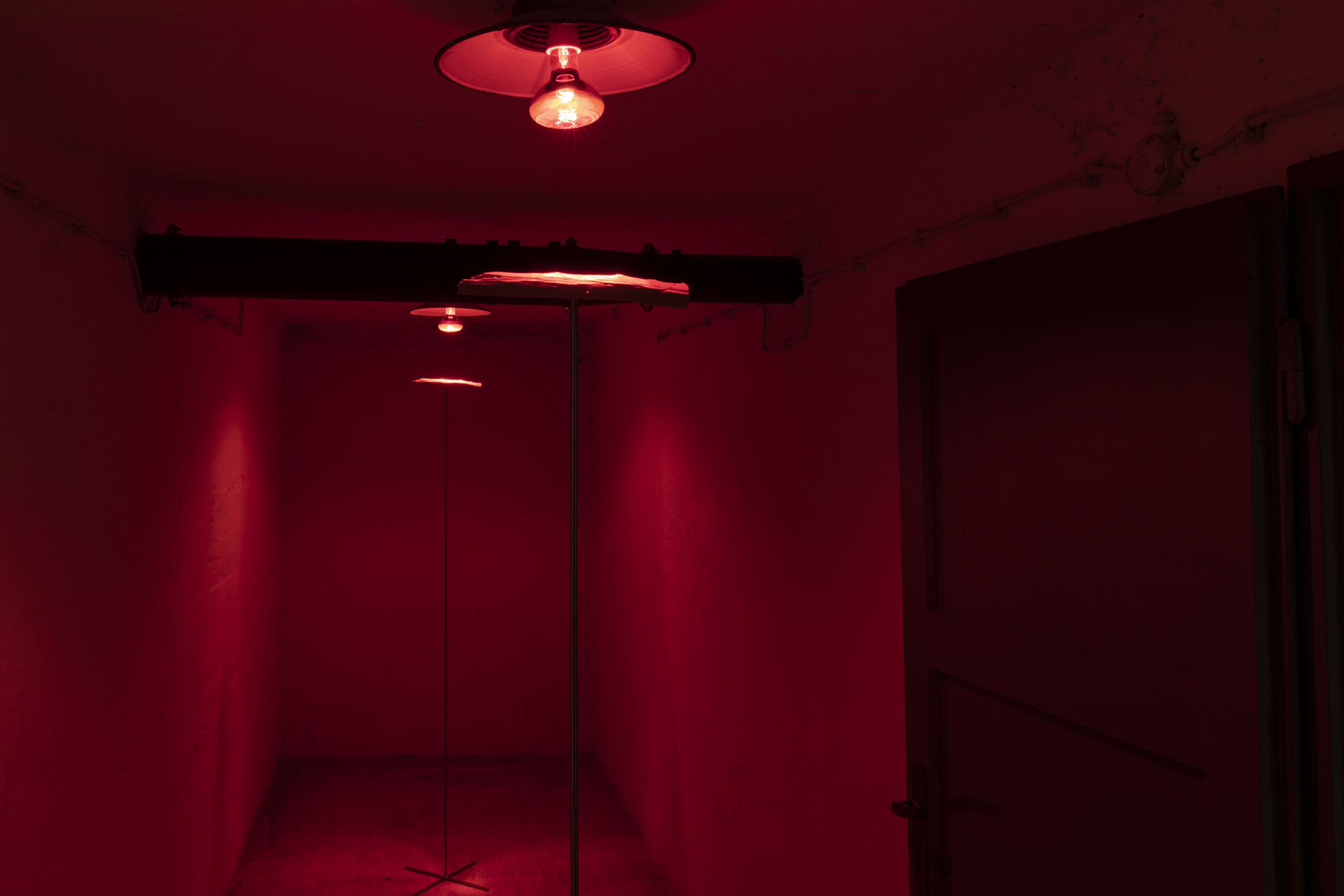
Jana Bernartová, Jan Šicko, Kati Linek: Sound and Look of NoWood, 2018, 2021, site-specific installation, 3D printing, photo: Leontína Berková.
technology and nature
The topic of non-binarity or loss of oppositions in thinking is very broad. One of the other places where it can be illustrated is in technology itself, which has experienced a rapid acceleration of development in recent decades. As an object of investigation through the lens of the new materialism, it is seen and interpreted primarily in direct relation to nature. As an example, we can think of our mobile devices offering a wide range of cultural and social activities every second, 24 hours a day. More specifically, we are referring to smartphones with Li-ion batteries, which are made of cobalt. As is well known, the second largest supplier in the world is the Democratic Republic of Congo (DRC), and the extraction of this raw material here has unfortunate environmental consequences. From this perspective, digital technology, as a distinctly cultural phenomenon, no longer appears as something autonomous, dematerialised and separated from nature – the new materialism thus has the ambition to analyse technology without reducing it to what we as human beings think of it; digital devices are personalised and become active agents that influence not only the course of nature but also, radically, our everyday lives. Jussi Parikka, a media theorist, frames this interconnectedness of cultural achievements and nature precisely in terms of “natureculture”, following, of course, its author, Donna Haraway.[5]
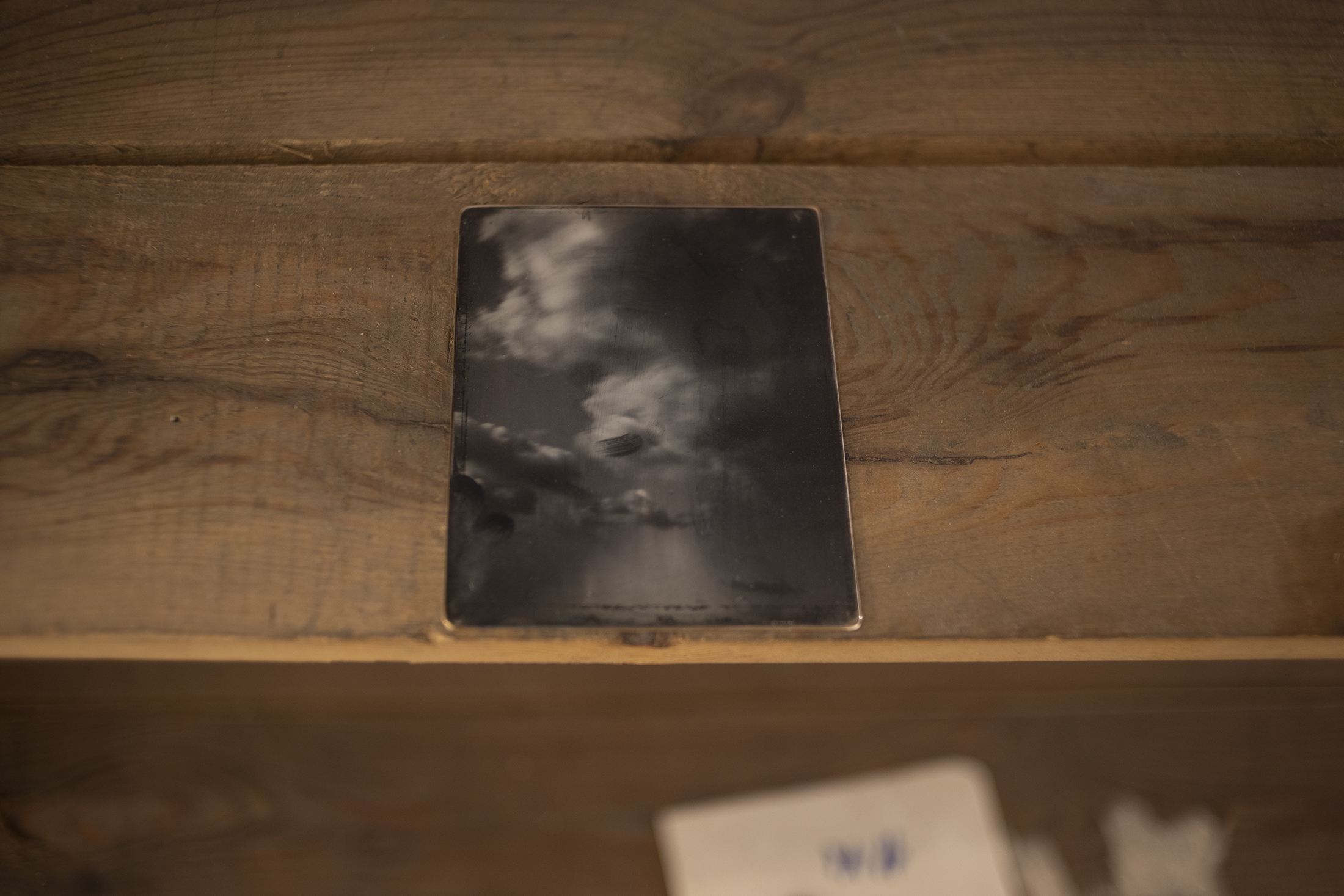
Ľuboš Kotlár: untitled (from the Nowlessness series), 2021, daguerreotype, brass, silver, technological collaboration: Joaquin Paredes Piris.